I hadn't thought that the story would make so many parts, but as I write a new part the length increases beyond my expectation. It is hard to keep out the words that come in my mind. I will try to keep this concise.
Kibber village
|
In my earlier post, I told you about our short chit-chat with the Lama of the Dhankhar monastery, and I think it is a beautiful post, but I am not happy, because the post didn't catch the attention of any whales here. Yet I am glad that few people complimented my efforts and motivated me to write this next part.
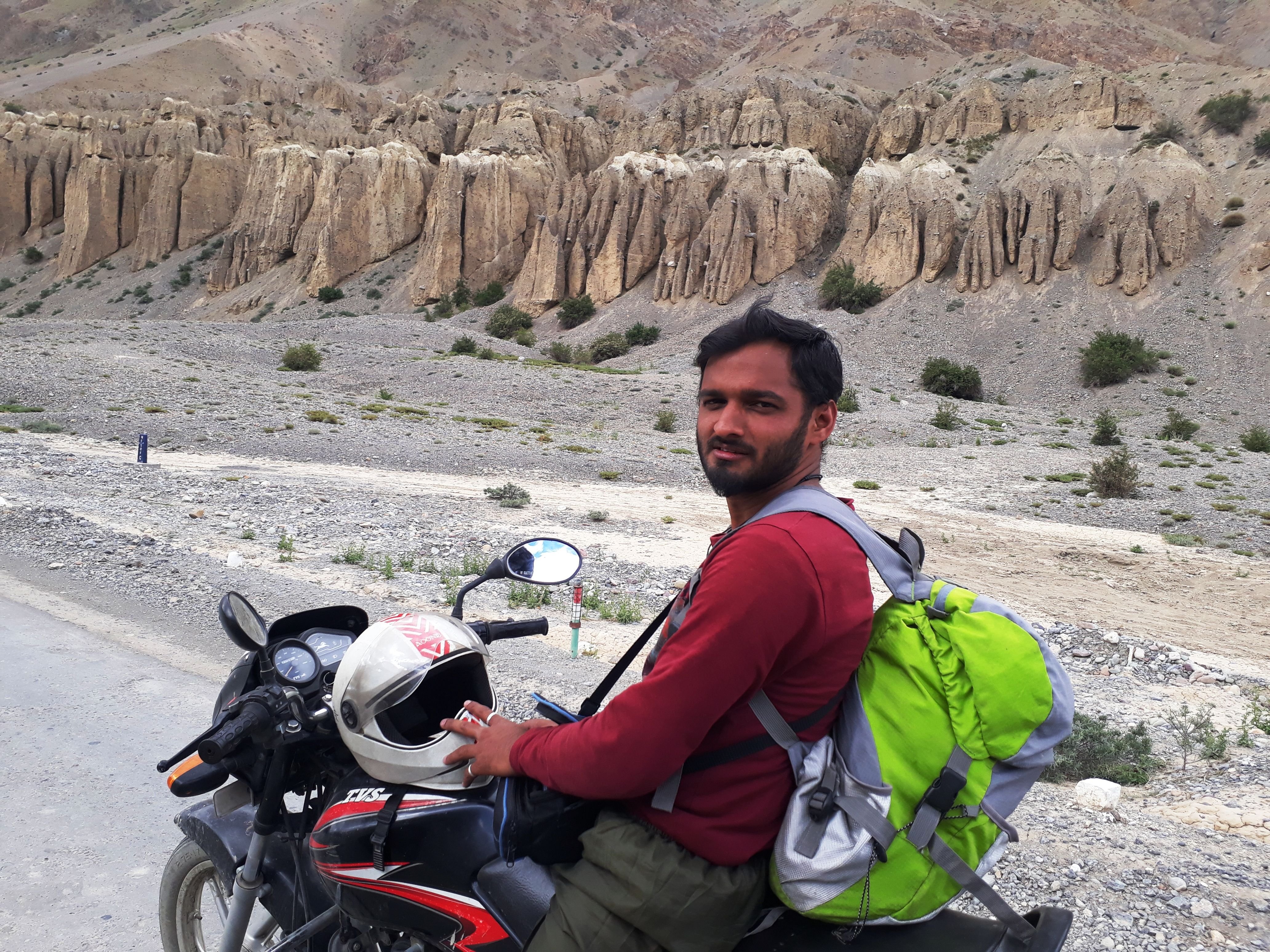
(On the way to Kaza from Tabo, look at the formation on the hill to the right)
Reaching Kaza from Dhankhar monastery was an easy job. This is how the road is. Good enough for bikers.
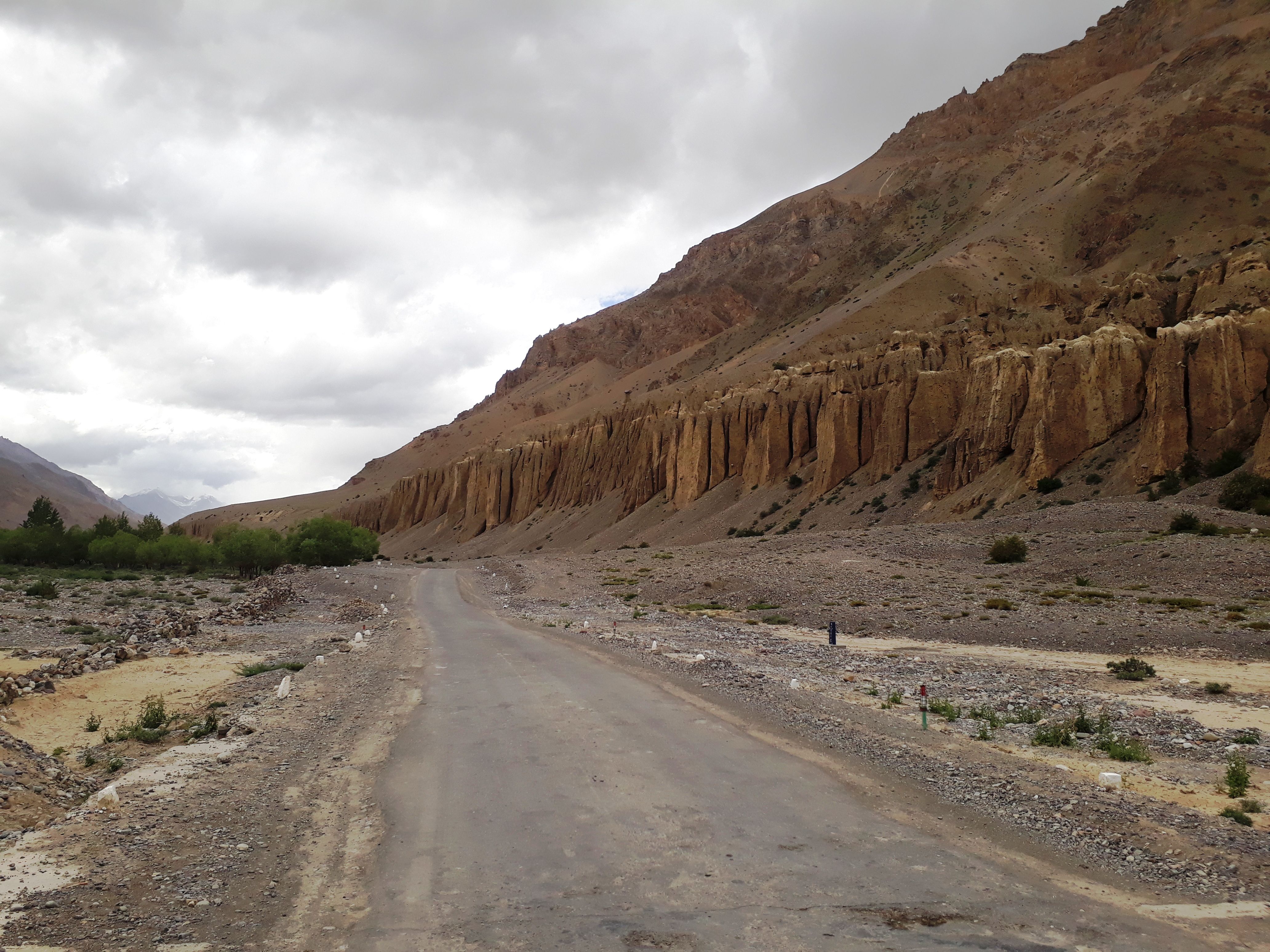
Kaza
Kaza is a small town and has the sub-divisional headquarter of the spiti region. We didn't have the time to roam around the small market it has, but we were hungry, as we hadn't eaten anything much since the morning when we were at Nako. Even at Tabo we hadn't found good options, except that tea at the Tabo monastery(as told in second part.)
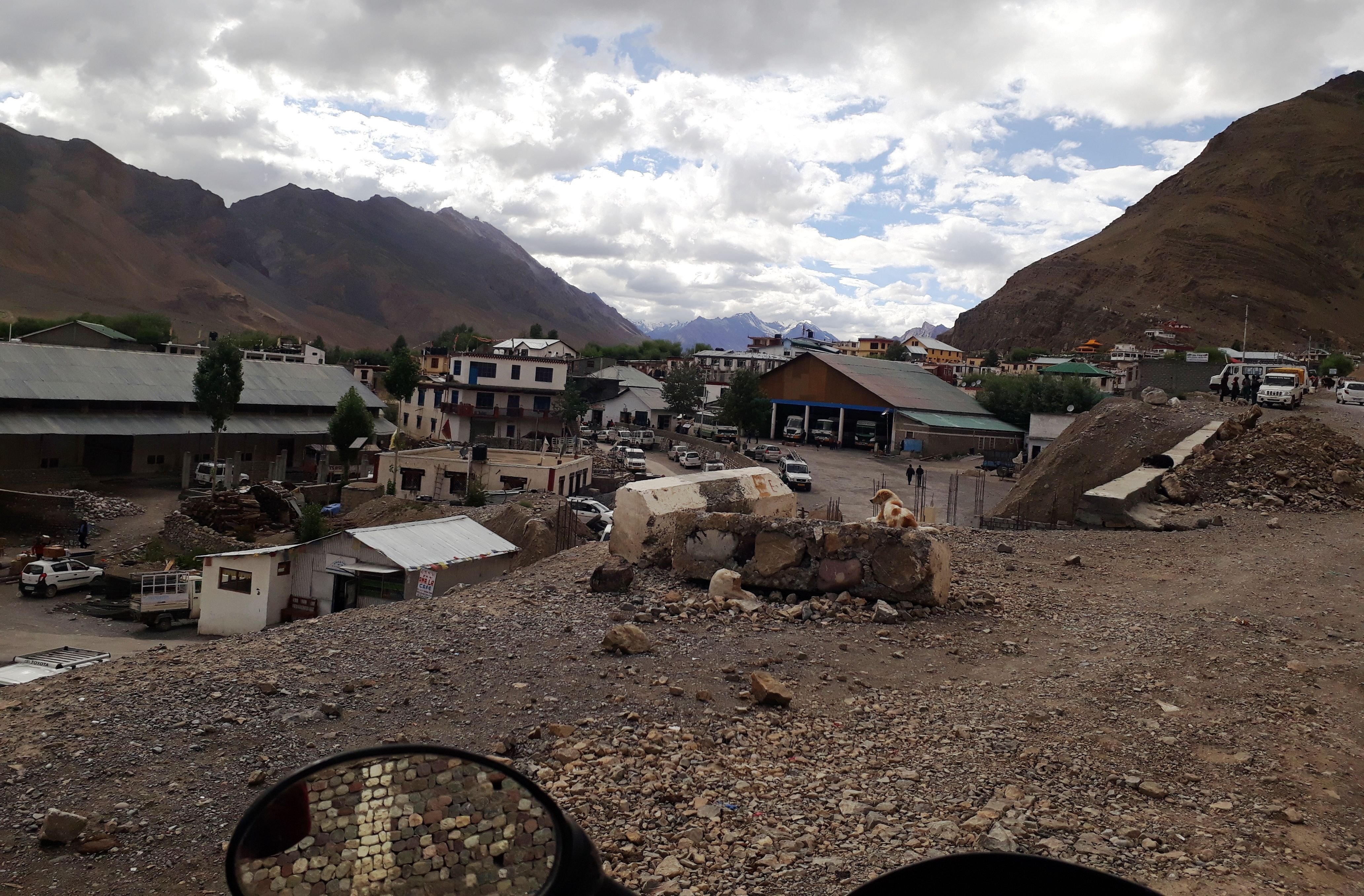
(Kaza town)
We found this traditional dhaba next to a fancy cafe in mid of the town. I ordered 2 parathas, Rahul 3 and Naren 1, and the numbers were proportional to our body weights. On the mountain slope on the other side of river spiti, some students of Jawahar Navodya Vidyalaya Kaza had decorated the whitewashed stones into the word 'NAVODAYA' in big letters, and it was visible from almost one kilometers of the road stretch and the town itself.
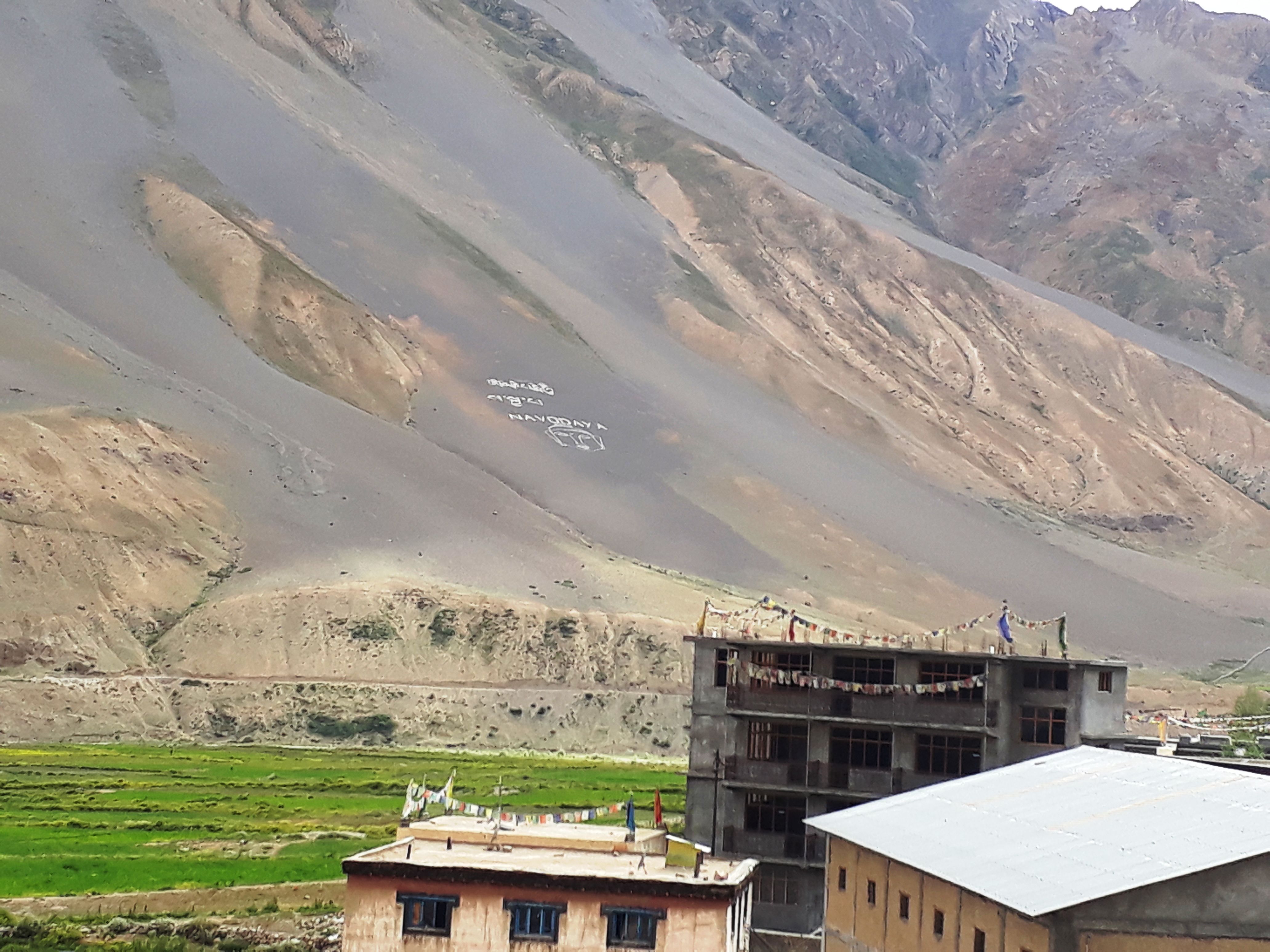
(word 'NAVODAYA' decorated using whitewashed stones, Kaza)
Navodaya schools are central govt funded boarding schools where children from the rural areas are brought to study after they qualify the entrance exam at the age of 10. Being an alumni of such one school, I felt nostalgic, and therefore clicked this picture. Earlier Kaza didn't have the school buildings and the students were sent to my school in Mandi district.
Kaza has hotels, petrol pump, schools, and even mechanic shops to repair you motor-cycles and other vehicles. I think it is a good place to spend some days here and explore the area around.
KEE monastery
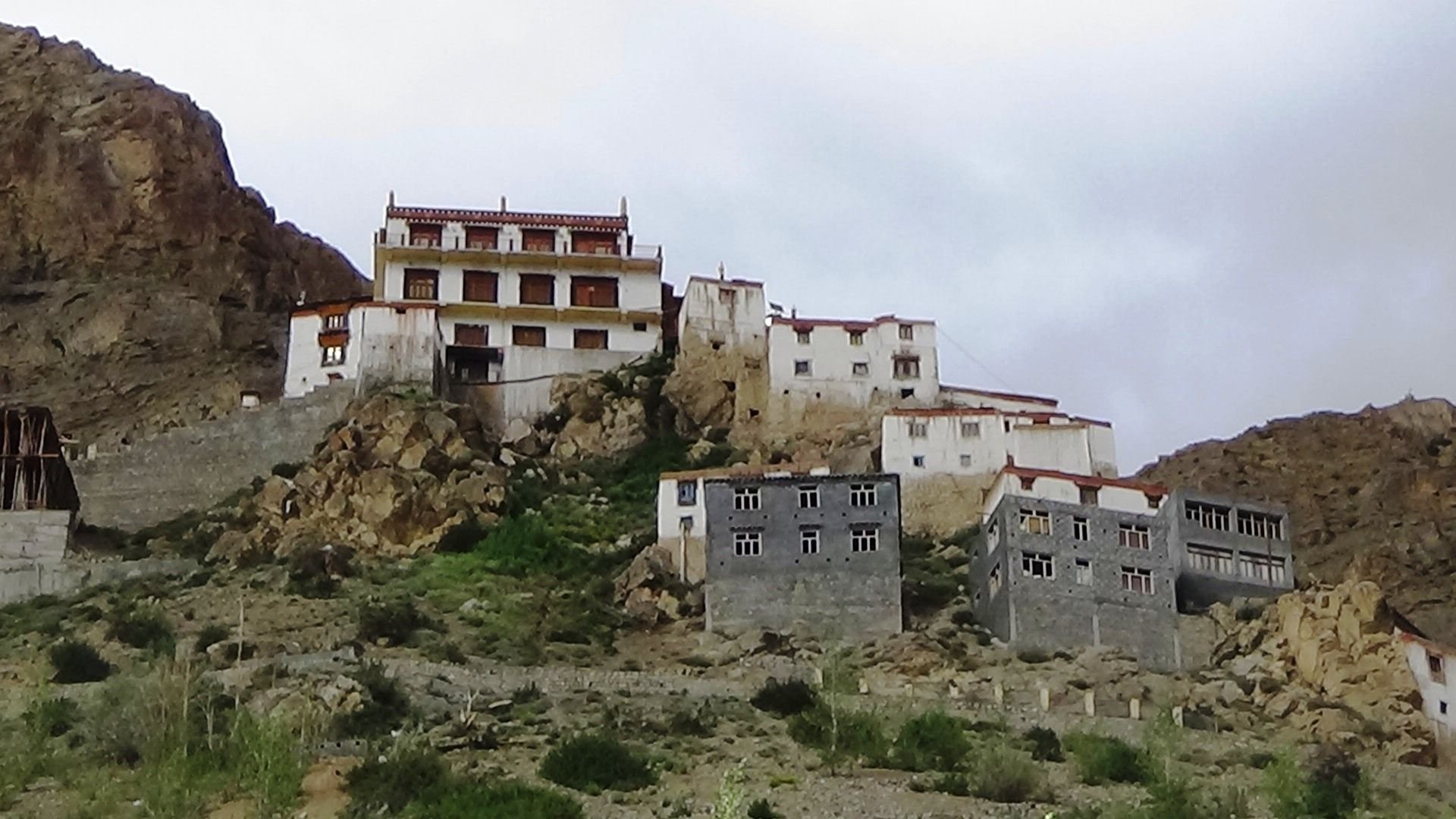
(Kee monastery, clicked from road below it)
Our Next destination was Kee(Keeh or Ki) monastery. A single lane metalled road diverges to the right after one kilometers from Kaza. Distance of Kee monastery was not more than 5 kilometers, as per my rough estimates. When we were below the monastery we read the name of 'Kibber' in a side road stone. Instantly we decided to go to Kibber first and then if the time allows, we would visit Kee.
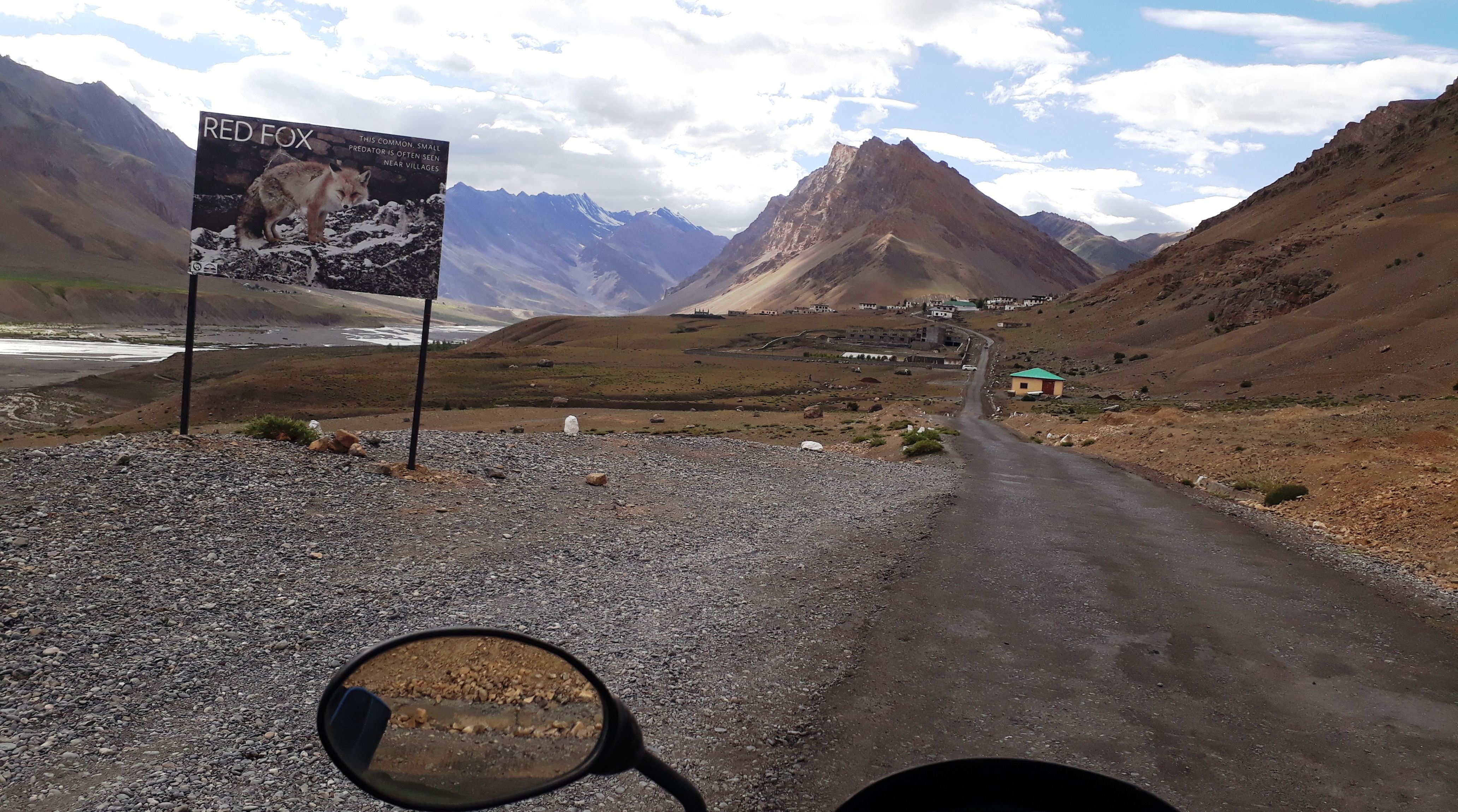
(Road to Kibber)
The road to Kibber is totally good. It didn't take more than half an hour to reach Kibber up at an elevation of 4270 metres above mean sea level. Kibber got famous because it was the highest elevated motorable road.
At Kibber village
After crossing several hair pin bends, when we reached almost at the top of the mountain, finally the Kibber village was in our sights. We stopped for a while and clicked some pictures.

(Naren and Rahul in front, Kibber in back)
There is this wildlife sanctuary board next to our bikes. Photography of the wild animals in the sanctuary is not allowed, but we didn't find any anyway. A board we found few metres back informed about Bharal, Ibex related to sheep and goats, snow leopard and himalayan wolves.
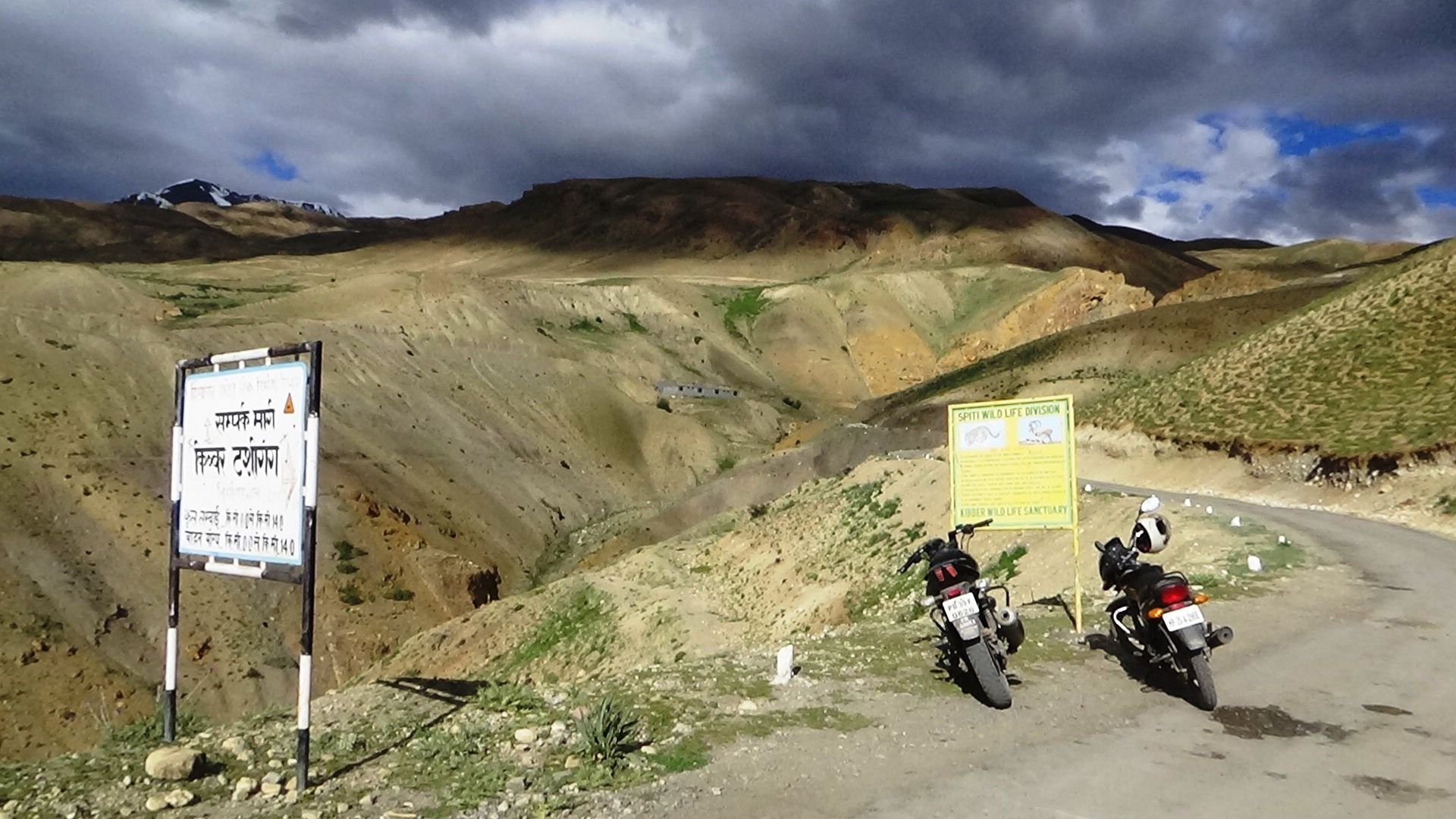
(Our bikes look so beautiful when there is such a beautiful background)

(Naren and Rahul in front, Kibber in back)
There is this wildlife sanctuary board next to our bikes. Photography of the wild animals in the sanctuary is not allowed, but we didn't find any anyway. A board we found few metres back informed about Bharal, Ibex related to sheep and goats, snow leopard and himalayan wolves.

(Our bikes look so beautiful when there is such a beautiful background)
We rode another 1 kilometer and finally we were at the 0 Km road stone, erected next to an old deteriorating stupa. In total it was about 16 kms from Kaza to Kibber. One can opt for the one 4:00 PM bus service from Kaza. The bus returns back to Kaza in the same evening.
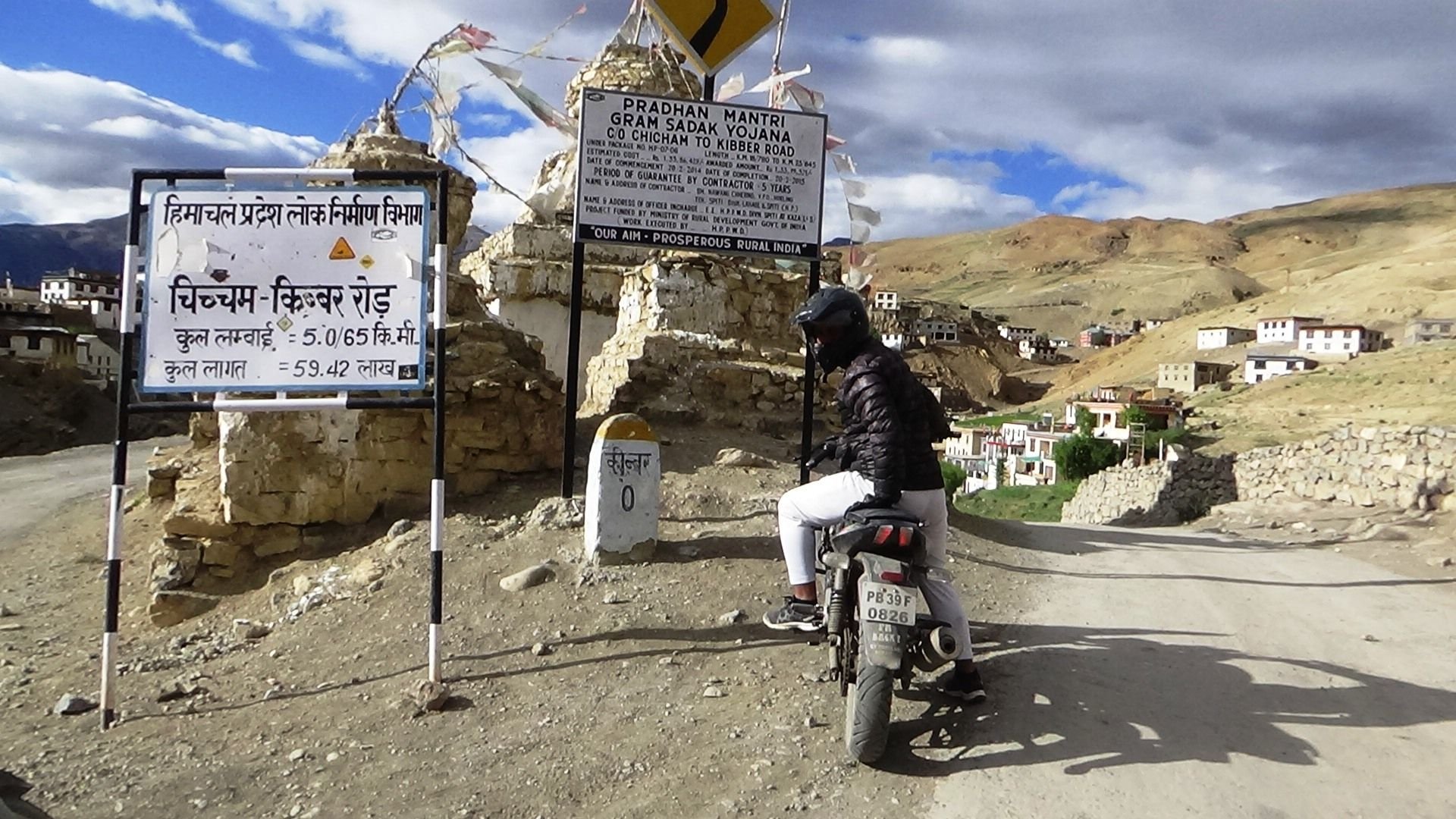
(Kibber 0 km)

(Kibber 0 km)
A group of youngs from south India was already seated on the parapets which gave the perfect view of the Kibber village. We sat on the empty ones to take a feel of the place and click some more.

(A pose and view of the village)
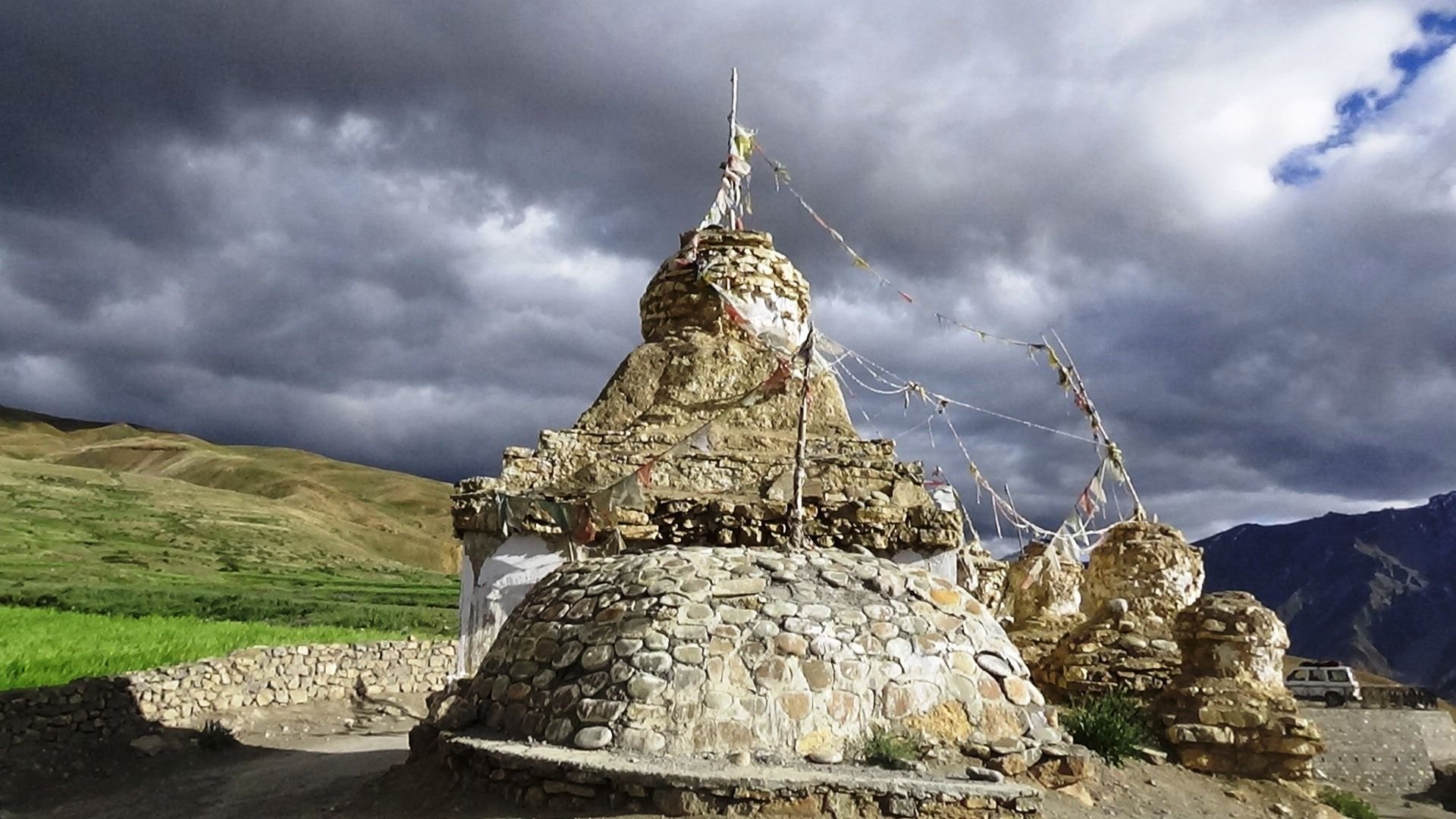
Old Stupa, Kibber village)
There were fields next to the village, and along with the cloud shadowed mountain ridge in the back, they made a hypnotic spectacle.
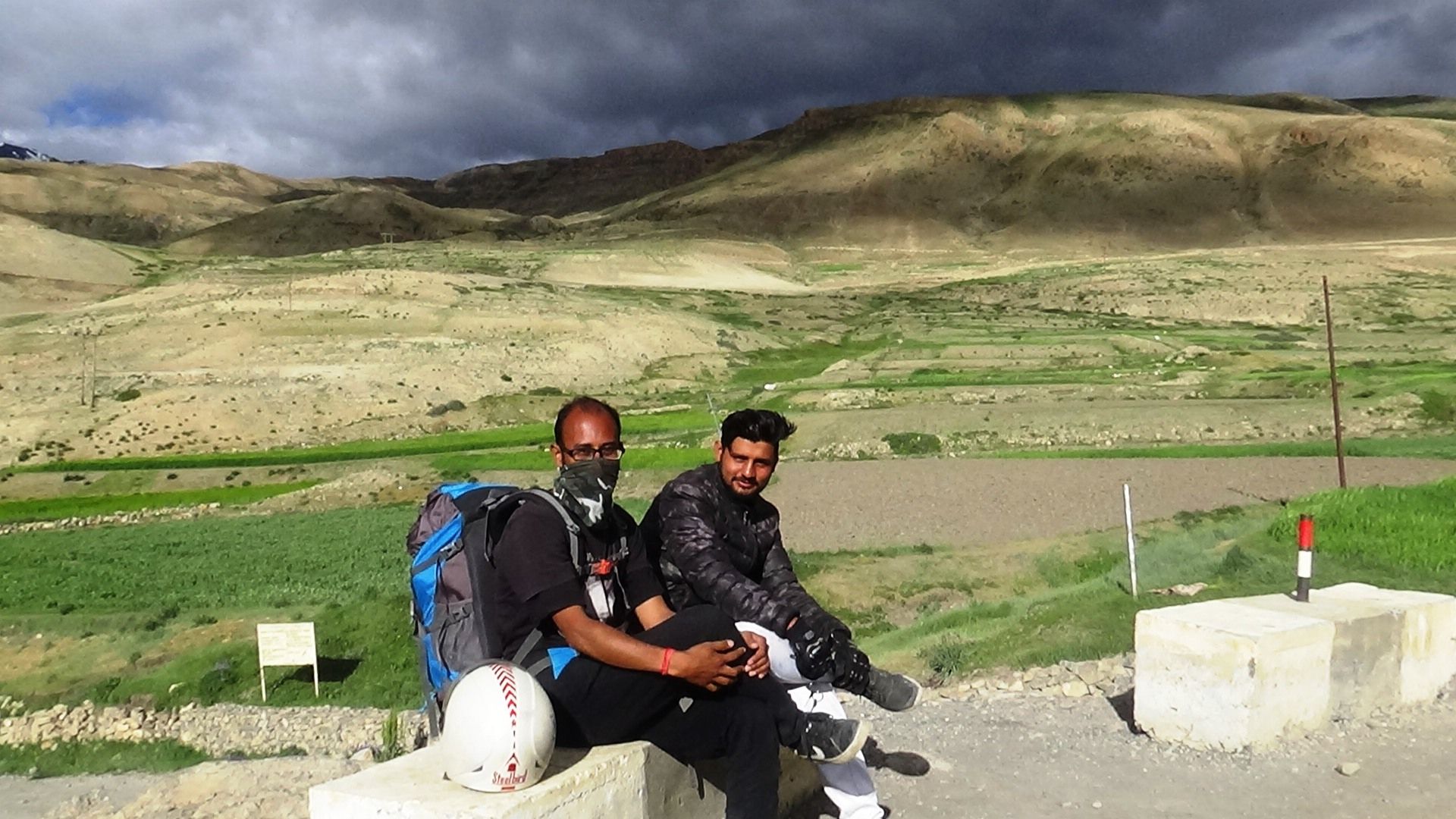
(lush green fields of Kibber and the limestone mountain summit)

(lush green fields of Kibber and the limestone mountain summit)
The agriculture is the major backbone of the villagers and it is said that they make a 3 day trek to Ladakh to sell their horses for money or yak. The village has about 80 houses, and are made of stone. Not of mud, as we would see in my next post where I would take you to some other nearby interesting villages of Spiti.
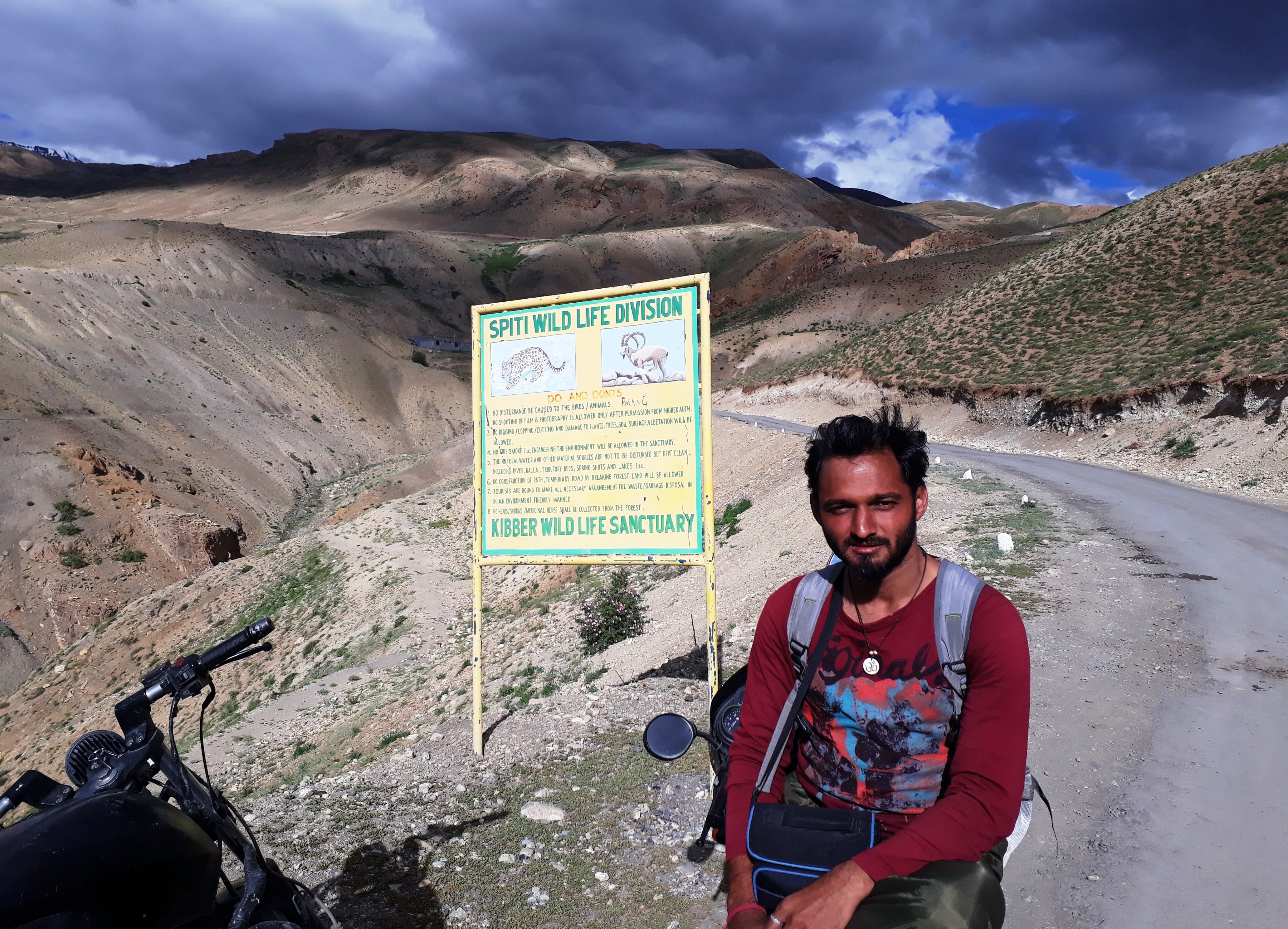
(In front of the wildlife sanctuary board)
We returned back to Kaza, hoping to reach Lossar at night, but the plan made yet another turn, and we would visit Langja and Komik village. Let's keep that part of story for another post.
Thanks for your kind visit!


No comments:
Post a Comment